Battle of the Pusan Perimeter
North Korean troops, hampered by supply shortages and massive losses, continually staged attacks on UN forces in an attempt to penetrate the perimeter and collapse the line.
Elements of the 3rd Battalion, 29th Infantry Regiment, newly arrived in the country, were wiped out at Hadong in a coordinated ambush by KPA forces on July 27, leaving open a pass to the Busan area.
[14][15] The KPA was organized into a mechanized combined arms force of ten divisions, originally numbering some 90,000 well-trained and well-equipped troops in July, with hundreds of T-34 tanks.
[16] However, defensive actions by US and ROK forces had delayed the KPA significantly in their invasion of South Korea, costing them 58,000 of their troops and a large number of tanks.
[45] The consumption of aviation gasoline thanks to both combat and transport aircraft was so great in the early phase of the war, taxing the very limited supply available in the Far East, that it became one of the serious logistical problems.
[49] North Korea's lack of large airstrips and aircraft meant it conducted only minimal air resupply, mostly critical items being imported from China.
[51][52] In mid-July, the UN Far East Air Force Bomber Command began a steady and increasing campaign against strategic North Korean logistics targets.
[49] The KPA's communications and supply were not capable of exploiting a breakthrough and of supporting a continuing attack in the face of massive air, armor, and artillery fire that could be concentrated against its troops at critical points.
Combined with temperatures of 105 °F (41 °C), the hot and dry weather contributed to a large number of heat and exertion casualties, particularly for the unconditioned American forces.
It would kick off with an attack by the US reserve units on the Masan area to secure Chinju, followed by a larger general push to the Geum River in the middle of the month.
[76] The plan of attack required the force to move west from positions held near Masan, seize the Chinju Pass, and secure the line as far as the Nam River.
[87] Both KPA and American armor swarmed to the scene and US Marine aircraft continued to provide cover, but neither side was able to make appreciable gains despite inflicting massive numbers of casualties on one another.
[71][97] On the night of August 5–6, 800 KPA soldiers began wading across the river at the Ohang ferry site, 3.5 miles (5.6 km) south of Pugong-ni and west of Yongsan, carrying light weapons and supplies over their heads or on rafts.
[101] Despite American counterattacks, the KPA were able to continue pressing forward and take Cloverleaf Hill and Oblong-ni Ridge, critical terrain astride the main road in the bulge area.
[113] Right at the center of the Busan Perimeter, Daegu stood at the entrance to the Naktong River valley, an area where KPA forces could advance in large numbers in close support.
The division reassembled to the east and launched a concerted night attack, broke the ROK defenses, and began an advance that carried it twenty miles (32 km) southeast of Naktong-ni on the main road to Taegu.
[128] During August 12–16, the KPA 15th Division formed up on the east side of the Naktong River in the vicinity of Yuhak-san, 3 miles (4.8 km) northwest of Tabu-dong.
[135] On August 14, General MacArthur ordered the carpet bombing of a 27-square-mile (70 km2) rectangular area on the west side of the Naktong River opposite the ROK 1st Division.
[137][138] The attack required the entire FEAF bombing component, and comprised the largest USAF operation since the Battle of Normandy in World War II.
[140] The UN ground and air commanders opposed future massive carpet bombing attacks unless there was precise information on an enemy concentration and the situation was critical.
[144] Fed by intelligence from the Soviet Union, the North Koreans were aware the UN forces were building up along the Pusan Perimeter and that they had to conduct an offensive soon or else forfeit the battle.
[155] UN troops were looking ahead to Operation Chromite, their amphibious assault far behind North Korean lines at the port of Inchon on September 15, and did not anticipate the KPA would mount a serious offensive before then.
[157] The five-prong offensive led to heavy fighting around Haman, Kyongju, Naktong Bulge, Nam River, Yongsan, Tabu-Dong and Ka-san.
One Indian Armed Forces officer was also killed in the incident, Colonel Manakampat Kesavan Unni Nayar, a representative from the United Nations Commission on Korea.
[189] With the addition of the 5,690 killed in the Bowling Alley, 3,500 at the Naktong Bulge,[105] at least 3,700 at Daegu[135][190][191] and an unknown number at P'ohang-dong before September 1, KPA casualties likely topped 50,000 to 60,000 by the end of the battle.
South Korean civilians, some of whom were leftist or communist sympathizers, were known to have been systematically imprisoned or killed in the Bodo League massacres, some of which had taken place during the battle.
[201][202]Shortly before the Pusan Perimeter fighting, retreating 1st Cavalry Division troops and U.S. warplanes killed an estimated 250-300 South Korean civilians, mostly women and children, in the No Gun Ri massacre.
[207] With virtually no equipment, exhausted manpower and low morale, the KPA were at a severe disadvantage and were not able to continue to pressure on the Pusan Perimeter while attempting to repel the landings at Inchon.
MacArthur and the Joint Chiefs of Staff, pushed by US leaders in Washington, decided to aggressively pursue the shattered KPA into North Korea.
[211] This would eventually result in Chinese intervention once the UN troops approached the Yalu River, and what was originally known as the "Home By Christmas Offensive" turned into a war that would continue for another two-and-a-half years.

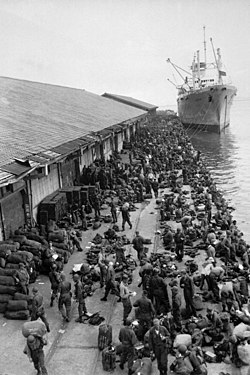

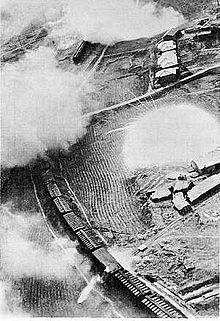

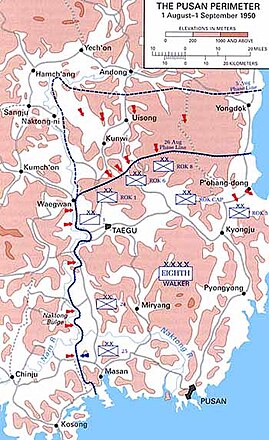


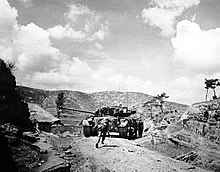





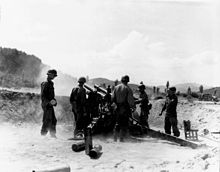
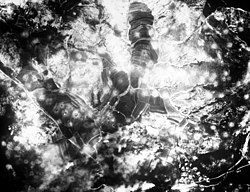


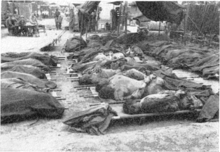

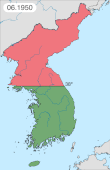
Chinese and
Soviet forces
• South Korean, U.S.,
Commonwealth
and United Nations
forces